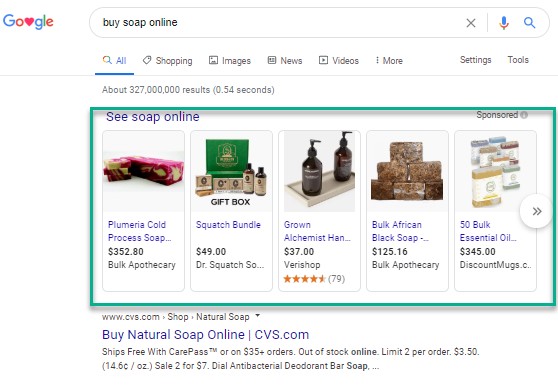By Northwoods Team
June 16, 2020
4 Minute Read
Updated: June 16, 2020
Originally Published: May 5, 2020
Digital advertising fuels growth for any ecommerce play. This case study indicates how your ecommerce business could thrive through digital advertising.
Has your ecommerce business ventured into digital advertising yet? Whether you seek to initiate or enhance digital advertising, Northwoods can help.
Results
Oct. 1st 2019 – May 31st 2020 (year-over-year snapshot)


During the first eight months working with this ecommerce client, we helped them increase gross revenue 68% year-over-year with a 949% return on ad spend—that is, every $1 spent on ads is yielding $9.49 in revenue.
More recently, ecommerce revenue continues to hold strong through COVID-19. Here are the results specifically for April and May while operating through the depth of COVID-19.
Apr. 1st – May 31st 2020 (year-over-year snapshot)


From April-May 2020, gross revenue increased 182% year-over-year with a 1,812% return on ad spend. For every $1 spent in ads, that equated to $18.12 in revenue.
What we’ve seen is that throughout the COVID-19 pandemic, demand generated via ecommerce is higher in many verticals, and competition is lower. There’s no better time than right now to advertise digitally and position your brand for growth.
What Did We Implement?
1. Google Expanded Text Ads
We implemented a detailed Google Search campaign to capitalize on the search volume for the products our client sells online. We delivered highly specific ads for each set of terms/products.
Google Text Ads (see below) allow you to position your brand atop search engine results pages on a per click basis, targeting only the keywords that are vital to your business.
With close monitoring and consistent data-based adjustments, we’ve been able to drive a highly profitable campaign to help grow our client’s business.

2. Google Shopping Ads
To advance brand presence on Google, we incorporated Google Shopping Ads (see below), a format designed for ecommerce businesses. It features your product image, title, price and reviews at the top of the search results.
For an ecommerce brand, Google Shopping Ads typically outperform Google Text Ads in profitability. That said, Text Ads can still be profitable. If you have the budget to incorporate both ad formats, the combination might help you to scale up even further.
Breaking out your campaigns by product category--best sellers and other distinctions appropriate to your product lines--allows you to control the volume of traffic among your lines. This control lets you capitalize when relative profitability shifts with, say, seasonality, competition or inventory availability.

3. More Channels to Come
We expect to expand soon into social advertising on Facebook, Instagram and Pinterest for this client. Users of these three channels neatly fit the client’s target audience.
In such ventures, we prefer to first apply a modest budget to Google Search. It’s low-hanging fruit; in the act of searching, Google users have already expressed intent to purchase. You want your brand in front of them as they actively look to buy.
Do You Have Any Active Google, Facebook, or LinkedIn Ad Accounts?
To help you pull the best possible performance out of your Google, Facebook, or LinkedIn ad account(s), we are offering a free digital advertising account audit - a $750 value - for a limited time only. The only requirement is an active advertising account with any of these three platforms. To claim your free audit, please visit our Digital Advertising services page and request a consultation.
Related Blog Posts

The first thing many companies do in trying economic times is to immediately cut back on non-essential spending (as they should). However, more often than not, marketing gets lumped into that category. Although it might feel like the right thing to do, here are a few examples that prove otherwise.

Coronavirus disease, known as COVID-19, has affected many businesses, large and small. As a web development and digital marketing agency, here at Northwoods we are seeing how COVID-19 is changing the way people are approaching their digital marketing strategy.

Your website is a logical, strategic channel by which to publish urgent messaging. When implemented correctly, website alert messaging is extremely effective and reliable in providing your users with consistent messaging without being intrusive. Here are some examples.